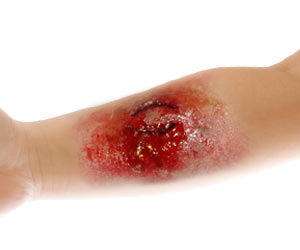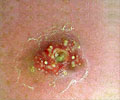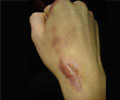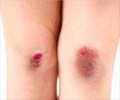A camera that produces blue light to detect the presence of bacteria in the wound, diagnosing wound infections before symptoms arise.
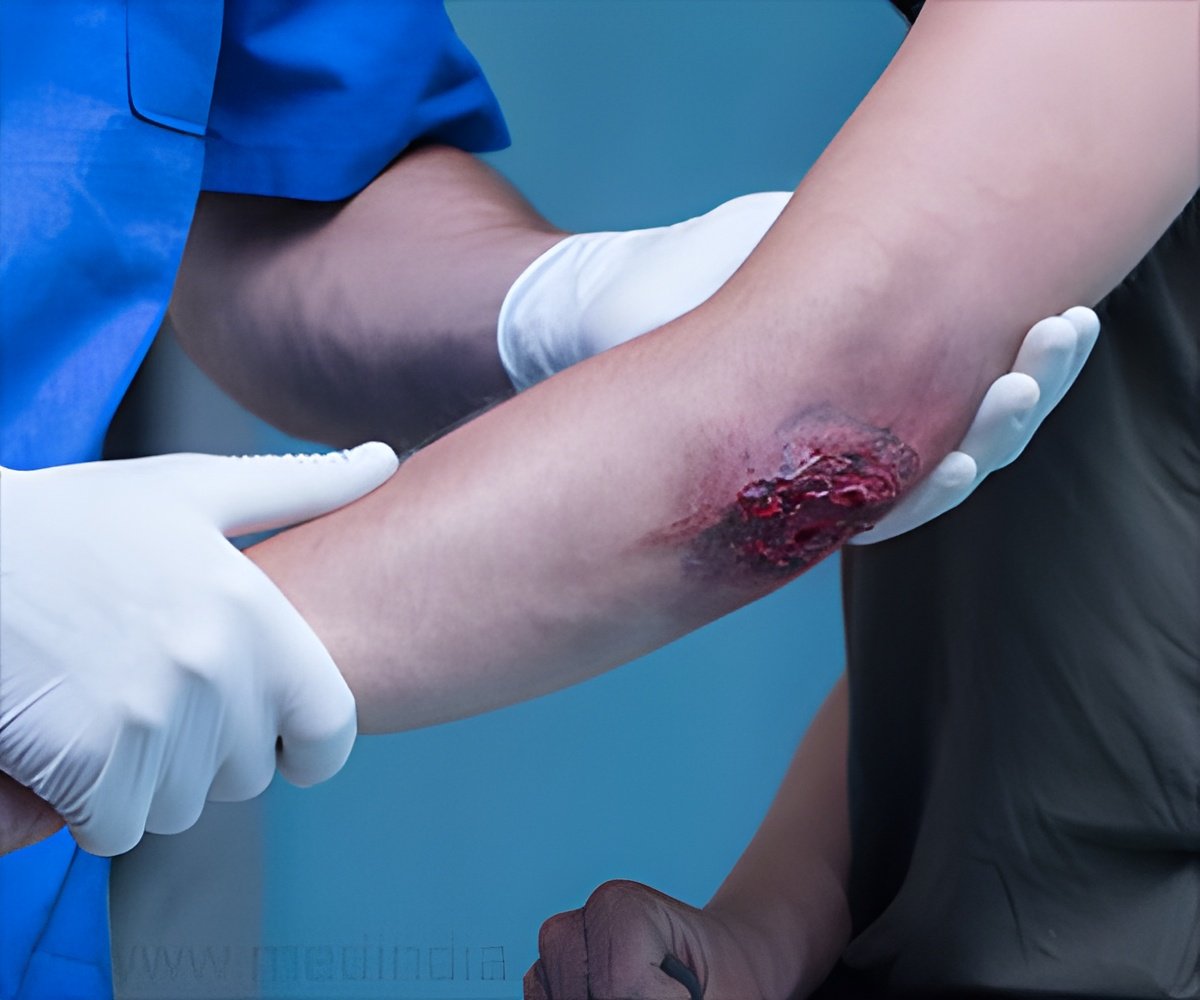
- Camera used to detect the presence of bacteria in wounds
- It will be useful in detecting the growth of colonies before symptoms are visible
- An image or video of the bacterial load can be captured
Risk Factors for Increased Growth of Bacteria in Wounds
- Venous hypertension (high pressure in the veins of the legs)
- Trauma
- Arterial insufficiency
- Diabetes mellitus
- Rheumatoid arthritis
The normal human skin has 105 organisms that live on the surface of the skin but do not cause any infection as they do not penetrate the skin. In open wound infection, however, there is no skin to penetrate and the organism is free to grow and multiply.
Progress to Colonization of Bacteria in Wounds
Not all bacteria that are present in wounds colonize to progress to invasive infections. The colonization of bacteria depend on:- Bacterial load - Amount of bacteria that is present in a gram of wound
- Virulence
- Pathogenicity
- Host’s immune system
Detection mostly occurs when wound healing takes a long time. Some doctors may identify the progression of bacterial infection based on the smell from the wound.
Moreover, the delay in wound healing can affect the individual’s health and their economy due to additional medical expenditure.
Association of Bacteria and Wound Healing
A certain amount of bacterial load in the wound leads to an increased production of endotoxin that leads to prolonged exposure to Il-1, Tumor Necrosis Factor-α and other pro-inflammatory factors. Though inflammation is normal during wound healing, when there are excessive inflammatory markers during wound healing, the process is prolonged.When there is an excessive growth of virulent bacteria it can lead to septicemia and even death.
Clinical Signs of Wound Infection
- Pain
- Exudate
- A distinct unhealthy appearance of the wound
- A bad odor
Blue Light for Detecting Bacteria
Tianhong Dai and colleagues reviewed the effect of blue light on wound healing and the growth of bacteria.- Blue light results in photo-activation of intracellular porphyrins which leads to the production of ROS.
- Studies showed that when wounds are exposed to blue light for a period of one hour everyday, there was no detrimental effect shown in the healing process.
Moleculight i:X to Detect Bacteria in Wound Infections
Moleculight i:X is being tested in a couple of UK hospitals as well as in clinical trials in Canada. This hand-held camera can be used to detect the presence of micro-organisms in wounds, even before the onset of symptoms.Ryan Kerstein, who is the Head of the Innovation Group at The British Association of Plastic, Reconstructive and Aesthetic Surgeons, said “This device would lead to more efficient diagnosis of harmful bacteria that could be slowing down wound-healing, and lead to faster and more targeted treatment.”
- Visualizing real time presence of bacteria in wounds
- Provide the bacterial load
- Aid in detection of bacterial load that could be delaying wound healing
- It can be used to take an image or video of the amount of bacteria present
The device that is undergoing clinical trials will help in improved detection of bacteria in wounds and assist doctors in effective wound healing process if the results are found to be promising.
References:
- Blue Light for Infectious Disease
http://www.ncbi.nlm.nih.gov/pmc/articles/PMC3438385/

